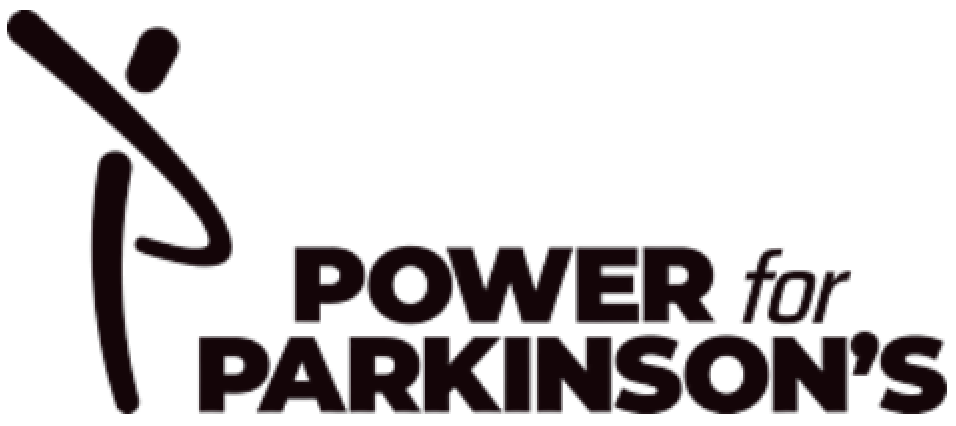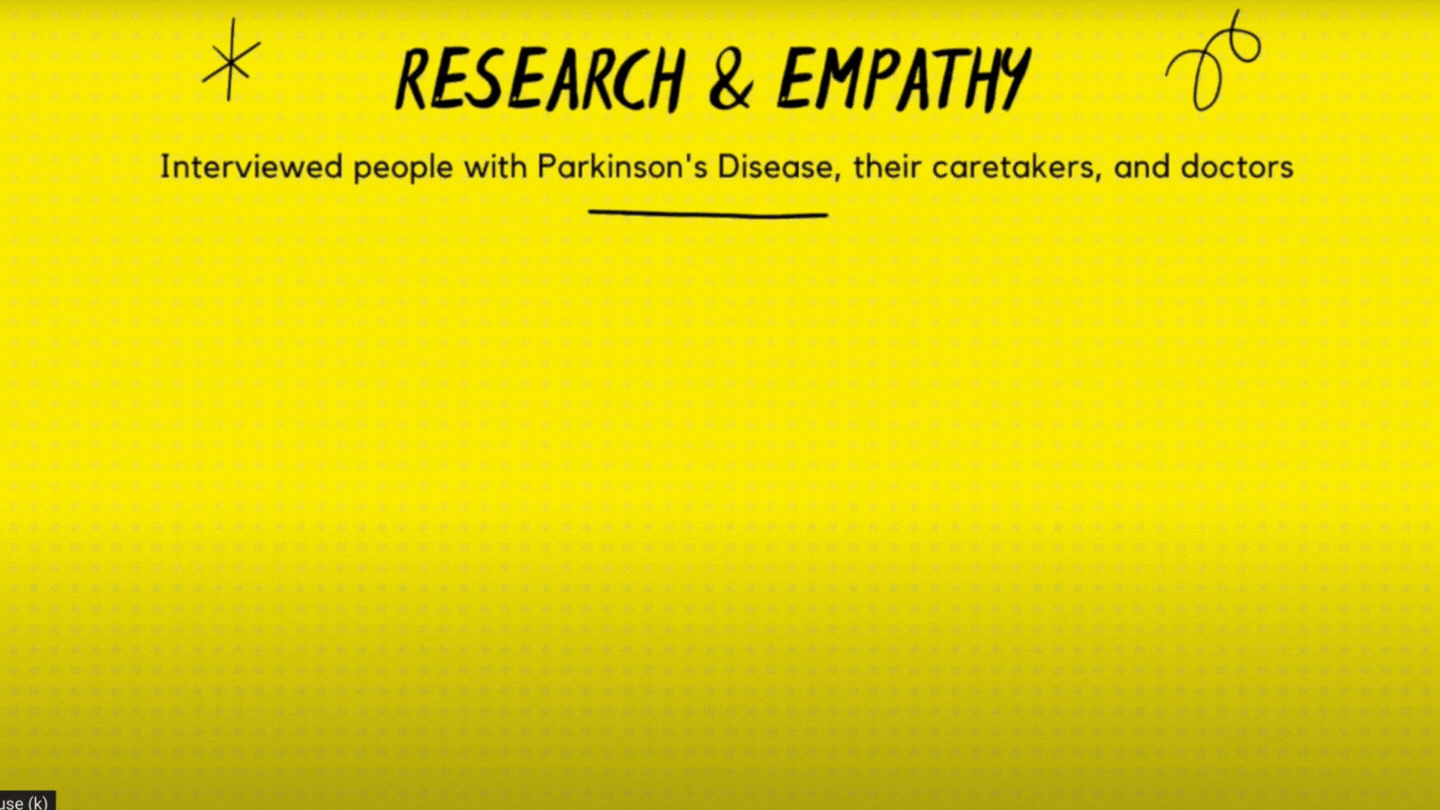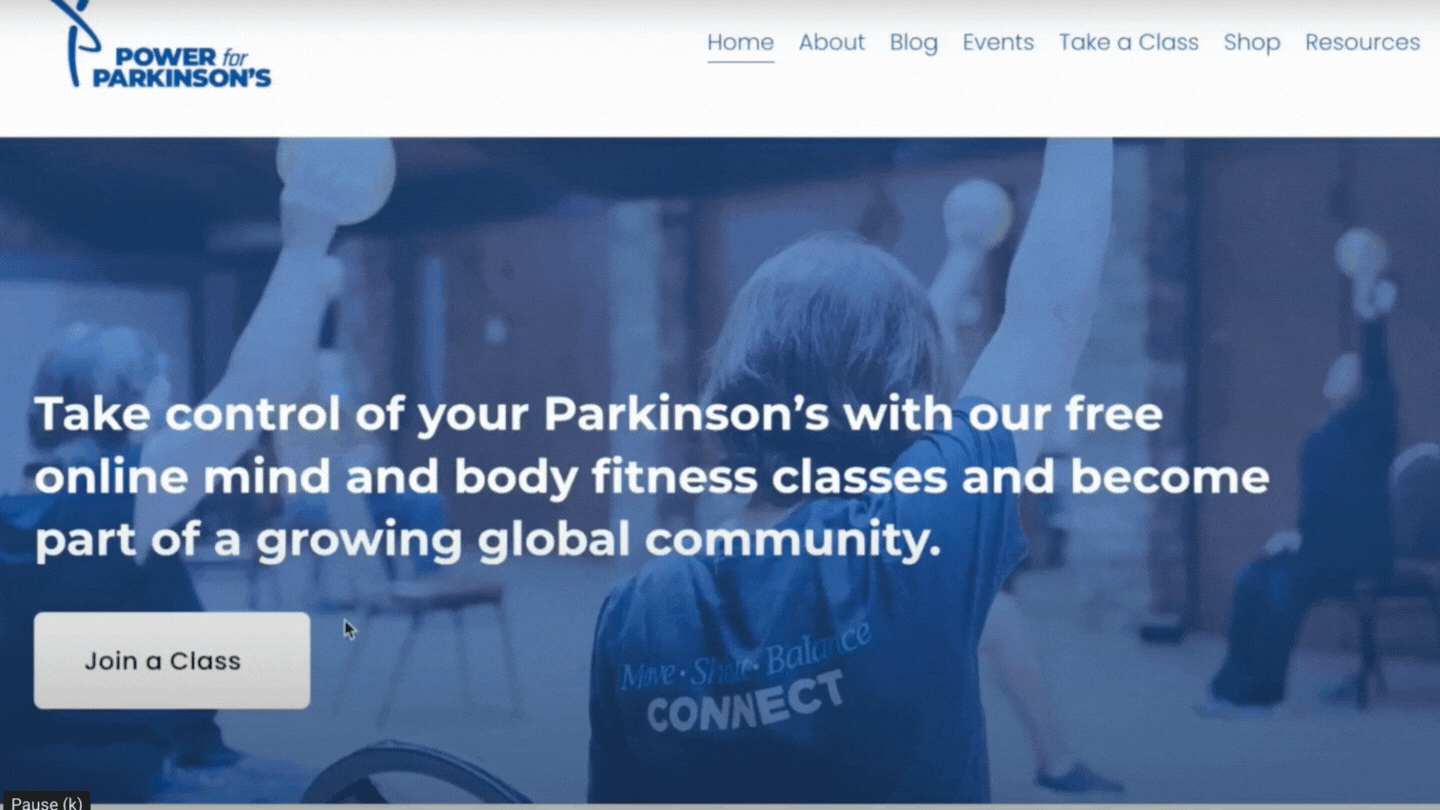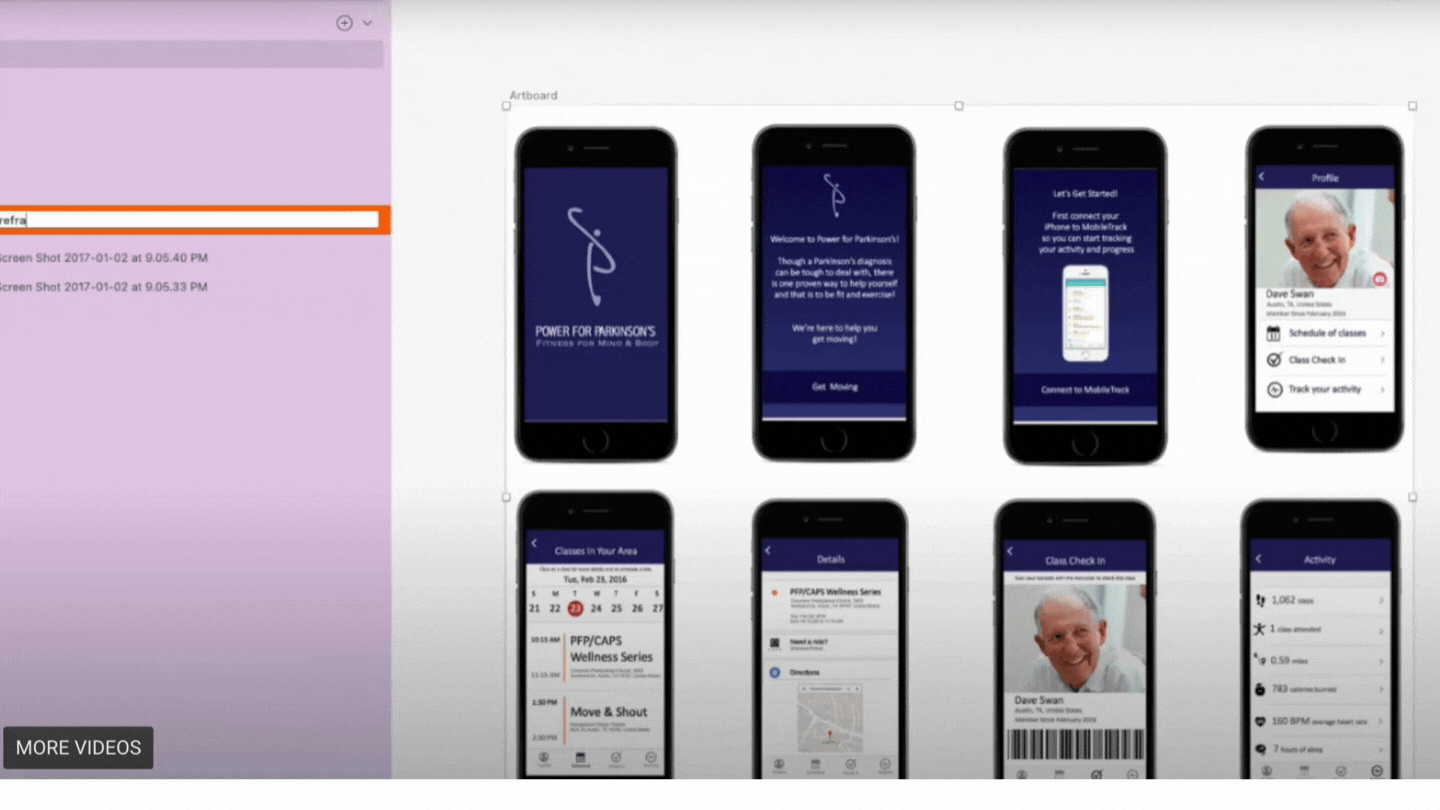PARTNER
SOCIAL LINKS
I designed a website and an app for people with Parkinson’s Disease
After seeing my grandfather struggle with Parkinson’s disease for years, I wanted to answer the question ”How might we improve the quality of life for people suffering from Parkinson’s Disease?”
To answer this question, I partnered with Power For Parkinson’s– an organization that provides free exercise classes to Parkinson’s patients and caretakers. For Parkinson’s patients, exercise enhances neuroplasticity and improves gait, balance and speech, drastically improving their quality of life. I wanted to build upon their work and see how we might enhance their lives even more.
I used design thinking to create two solutions for this problem: an updated website for Power for Parkinson’s and an app. Here is the design process I followed:
01. Research & Empathy
To create both of these solutions, I started with research and empathy. I initially researched treatments, programs, and apps that currently exist for Parkinson’s disease. I then interviewed people with Parkinson’s disease, their caretakers, and doctors. From this initial research phase, I found a resounding theme: Parkinson’s disease can be very isolating and cause depression, and attending exercise classes helped alleviate these symptoms because it created a sense of community and medical research shows how exercise can improve mobility. While there were already existing apps and websites in the Parkinson’s space that focused on exercise tracking, there were none that focused on fostering community participation. I also found that there were many challenges with the accessibility of technology. Given that Parkinson’s disease often results in shaky hands and decreased mobility, using a computer is difficult because buttons are often small. Typical font size was also difficult for many of our users to decipher.
I was excited because there was so much we could do to improve accessibility and build community.
02. Participatory Website Design
Using these insights, I worked to update the Power for Parkinson’s website. I thought the best way to do this would be through participatory design — especially given how important accessibility was and how much insight we could leverage from experts in the Parkinson’s space. So I held innovation labs with the internal team and brought in people with Parkinson’s Disease to test the website along the way. As I designed and tested the website, I realized how important big font sizes was, how important it was to allow many ways to access the classes on each page of the site.
When creating the website, we also focused on the importance of community. In person classes, people could meet each other. And in the YouTube classes, people attend globally and Power for Parkinson’s has someone monitoring the chat and creating community. We also found caretakers sometimes used the website instead of the people with Parkinson’s so in future iterations, we will incorporate resources for caretakers and allow them to connect with each other. Overall, redesigning the website, I realized that while aesthetics are important, accessibility should be an even greater priority. Making this site accessible has resulted in a much larger subscription rate and overall satisfaction with the organization.
03. Design and Test Wireframes for a Parkinson’s App
As part of this design challenge, I also developed the wireframes for an app for Power for Parkinson’s that would help people foster a wellness routine focused on mind, body, and community. Through this app, people could have easy ways to track their activity throughout the day, see what classes were in the area with accessible directions and options for rides (so for example if they wanted an Uber they could get to the classes a lot easier), and check into local classes. Most importantly, this app would allow people to connect with each other and join a community and feel supported.
Learnings
From this project, it started off with a desire to improve mental and physical health. And along the way I learned how important it can be to design for accessibility, community, connection, and health. By bringing in our users along the way, we were able to make small tweaks in our design that made a huge difference. I think my grandpa would’ve loved this.
#parkinsonsdisease #parkinsons # exercise #accessibility #uiux #webdesign #appdesign #innovationlabs #designthinking #health #caretakers #community






